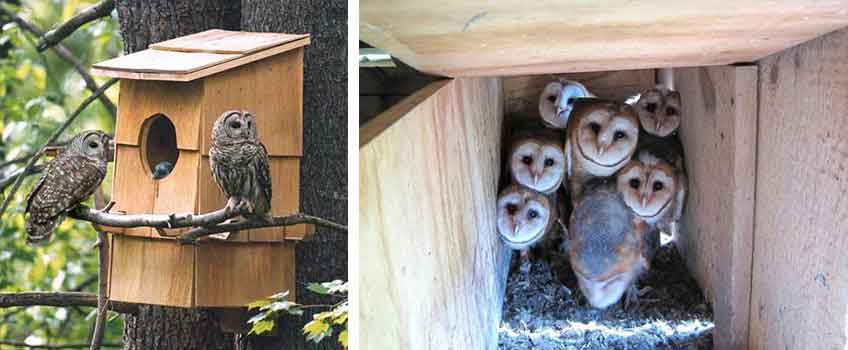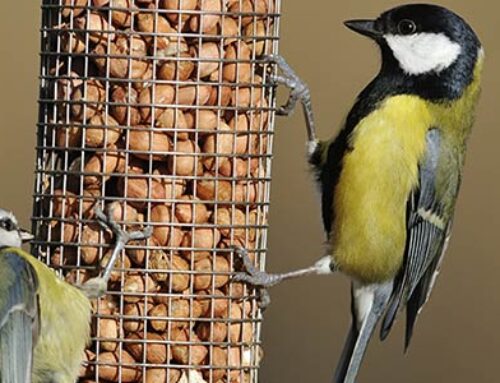National Nest Box Week is from 14th to 21st of February and it gives you the chance to contribute to the conservation effort in the UK whilst giving you the pleasure of observing any breeding birds that you attract to your garden. Providing a safe and snug place for birds to roost and nest in your garden can be a very rewarding experience. Choosing a good quality nest box is important, as it will have an influence on whether your birds will use it.
For smaller garden birds, nest boxes are excellent substitutes for the holes found in old trees. Regular hole-nesting birds include blue, great and coal tits, nuthatches, house and tree sparrows, starlings, spotted and pied flycatchers, robins, house martins, kestrels and tawny owls. Much depends on the type of the box, where it is located, and on its surroundings.
When choosing the right nest box for your smaller garden birds, you should look out for the size of the entry hole on your nest box. A 25 mm entry hole is best suited for smaller birds, such as blue tit, coal tit and marsh tit. A 32 mm entry hole is suitable for slightly larger garden birds like great tit, tree our house sparrow, nuthatch and lesser spotted woodpecker.


For larger birds, such as barn or tawny owls, kestrels and other birds of prey, your nest box should have a landing shelf or perch, and possibly a fledgling exercise area for the youngsters to exercise their wings. Where to position your nest box depends on the species the box is intended for.


Nest boxes for tits, sparrows or starlings should be fixed two to four metres up a tree or a wall. Unless there are trees or buildings which shade the box during the day, face the box between north and east, thus avoiding strong sunlight and the wettest winds. Make sure that the birds have a clear flight path to the nest without any clutter directly in front of the entrance. Tilt the box forward slightly so that any driving rain will hit the roof and bounce clear.
House sparrows and starlings will readily use nest boxes placed high up under the eaves. Since these birds nest in loose colonies, two or three can be sited spaced out on the same side of the house. Keep these away from areas where house martins normally nest.

Open-fronted boxes for robins and wrens need to be low down, below 2m, well hidden in vegetation. Those for spotted flycatchers need to be two to 4 metre high, sheltered by vegetation but with a clear outlook. Woodpecker boxes need to be three to 5 metre high on a tree trunk with a clear flight path and away from disturbance.
Two boxes close together may be occupied by the same species if they are at the edge of adjoining territories and there is plenty of natural food. While this readily happens in the countryside, it is rare in gardens, where you normally can only expect one nesting pair of any one species. The exceptions to this are house and tree sparrows and house martins, which are colonial nesters. By putting up different boxes, several species can be attracted.




